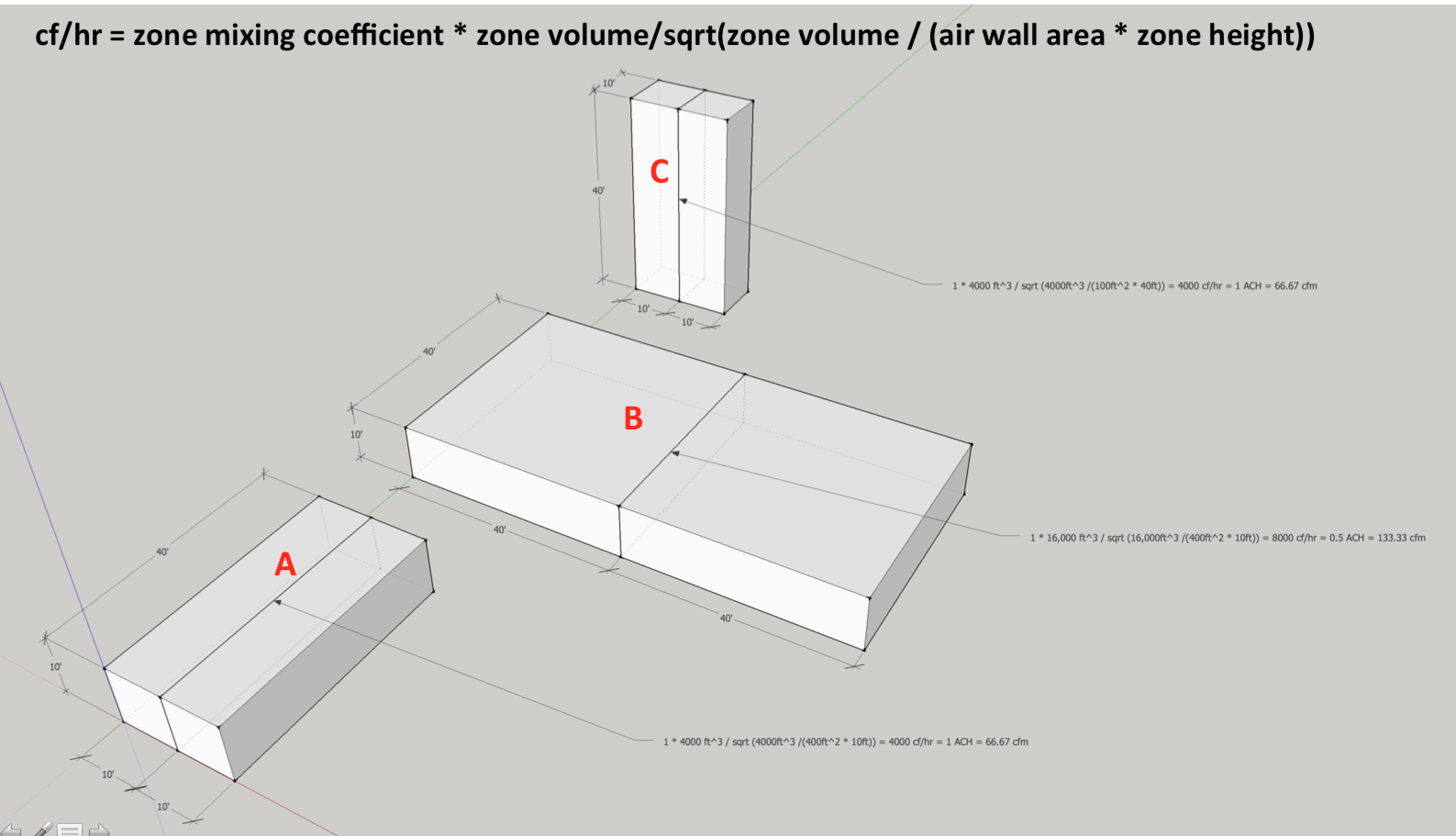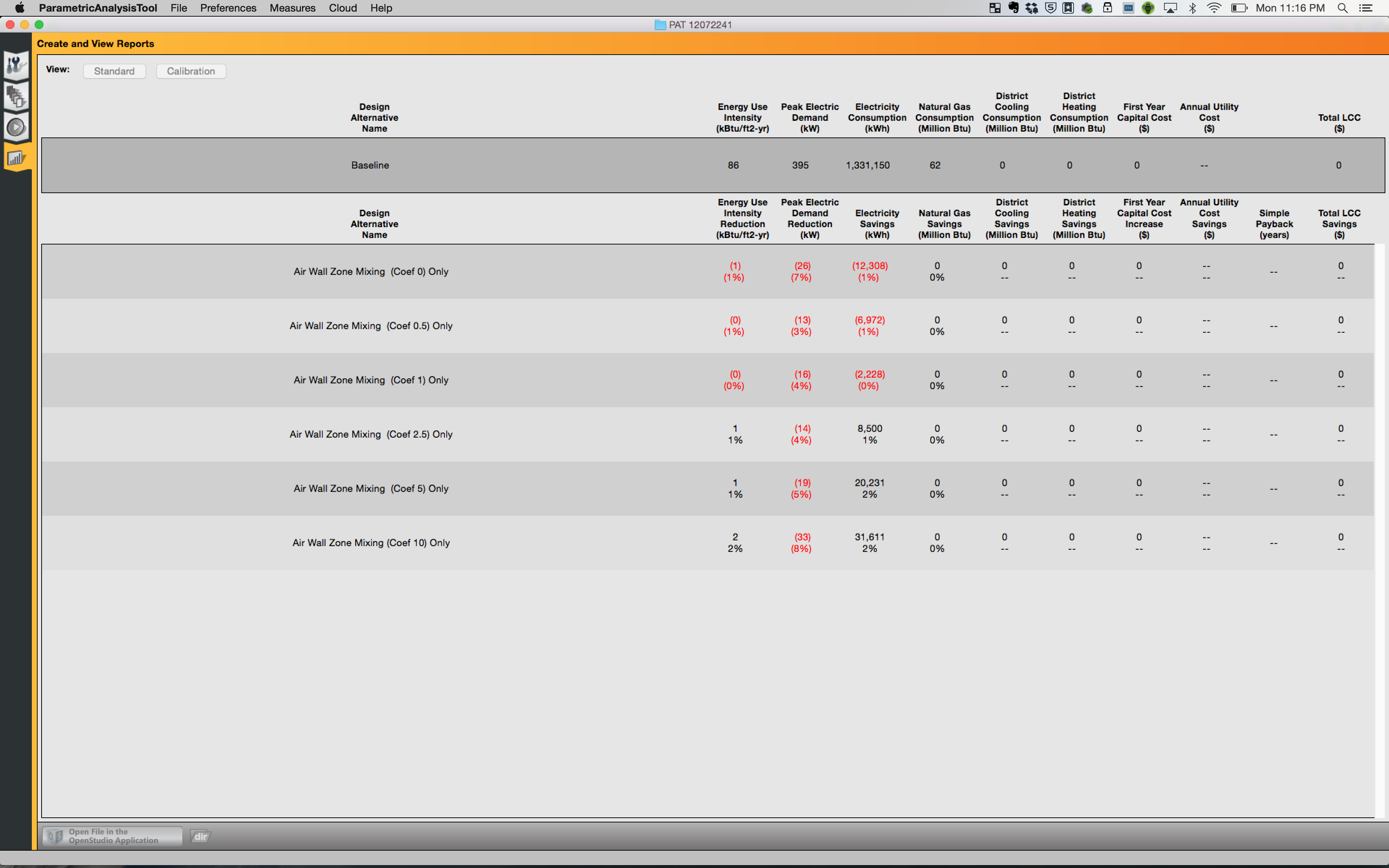Best way to represent thermal zones boundaries when there isn't a wall
Hi everyone, I'm new to all this building energy modeling thing and I've got some doubts while creating my model. I'm modeling a real building and my objective is to simulate a green roof on it and evaluate if this modification can reduce the total eletric consumption (decreasing the use of the ACs).
I thought I should use the FullInteriorlandExterior option, and for that I created all my spaces with a convex geometry. But, many rooms got split up in many pieces, so I assigned Air Walls for the 'openings'. I've read that it transforms it into a Drywall material, so the heat is transfered, but not airflow. So I thought of using the "ZoneCrossMixing" to allow that.
My questions are:
Should I really use the ZoneCrossMixing and Air Walls to represent this openings? That way I would let them be two different thermal zones.
Should I merge the two spaces into one thermal zone? I was really afraid of all the possible problems of using Internal Mass.
Is there really a huge difference in results between FullExterior and FullInteriorandExterior? Should I forget all of the above and just use FullExterior?
I'm sorry for all these subjective questions, I have just come to a dead-end, so I thought I could use an expert advice :)
P.S: before anyone questions, this simulation is part of my thesis, but I really wanted to make it as precise as possible, since the building being simulated is from the company I am currently an Intern in ;D







You may want to rename your question, it is more about thermal zoning when using FullInteriorandExterior and how to represent thermal zone boundaries that don't represent physical walls.
Some comments:
OpenStudio 1.9.0 adds ZoneMixing to the OpenStudio API, but not the GUI. I plan to publish an experimental measure for core and perimeter models that turns interior zone boundaries adiabatic and and adds in zone mixing objects in both directions. This demonstrates zone mixing but was also a test to see how simulation results are affected with airflow across zone boundaries vs. just conductive heat transfer. This still however wouldn't allow light to go across the boundary unless you are using Radiance.